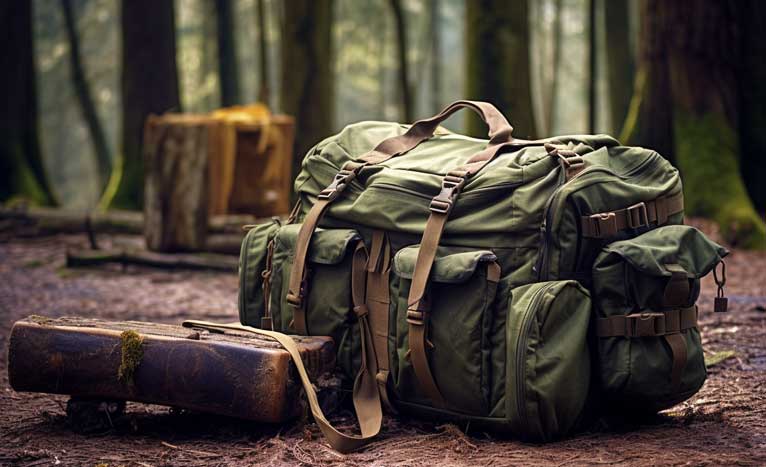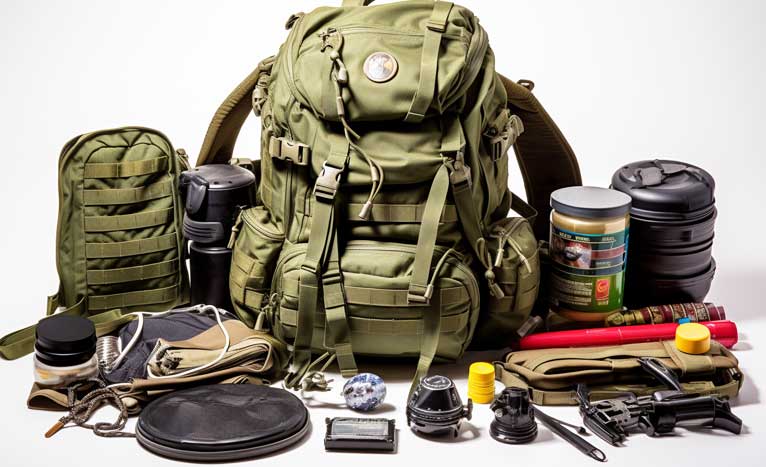
The Basics Of Bug Out Bags
The thought of your children being in an emergency situation is a nightmare for any parent. However, preparing for such unforeseen circumstances can offer peace of mind. One practical step is to create a bug out bag specifically designed for your kids. An emergency can happen at any time and in any place, and a well-equipped bug out bag can significantly enhance your child's resilience and capacity to navigate through such a situation safely. Furthermore, preparing the bag can be a valuable opportunity for your child to learn about safety, responsibility, and problem-solving in real-world situations.
I have been preparing bug out bags for family members who have no prepping experience but want to be prepared for any situation. People forget that kids have unique needs that need to be addressed in emergencies.
The Purpose of a Kid's Bug Out Bag
A bug out bag is an emergency kit designed to sustain a person for at least 72 hours. For children, it ensures they have their essentials if a crisis occurs. This bag is crucial not just for major disasters but can also serve during smaller emergencies like power outages or sudden evacuations. It's not merely a collection of items, but a lifeline that provides essential aid to your child in an emergency, providing self-sufficiency, and bridging the gap until help arrives.
The goal isn't to prepare your child for every possible situation, but to equip them with the means to be adaptable, resourceful, and resilient. It is even a good idea to put some of these items discussed in this blog in their everyday school backpack. What if there is an emergency and they can’t make it home from school? Teach them how to use what is in their bag.

Key Considerations When Building Your Kid's Bug Out Bag
Before we jump into what to pack, remember that every child is unique. Their age, personal needs, and the specific circumstances you're preparing for all play a significant role. The bug out bag should be light enough for them to carry and packed with items suitable for their age and abilities. Also, consider involving your child in the process of assembling the bug out bag. This can give them a sense of ownership and understanding of the items within it, making them more likely to use the items correctly when needed. This active involvement in the process can also help alleviate any fears or anxiety about the unknown, as they see first-hand the steps being taken to ensure their safety.
Essential Items for a Kid's Bug Out Bag
Food and Water
Pack at least a three-day supply of non-perishable, easy-to-eat food and water. Consider the child's preferences, any allergies, and try to include food that doesn't require cooking. Additionally, hydration packs and water purification tablets could prove essential in situations where clean drinking water is scarce. Remember, adequate nutrition and hydration are key to maintaining energy levels and cognitive function during stressful situations.
Again, it is going to be crucial you run through the pack and its supplies with your child. Teach them how to use water purification tablets and do a test run in your kitchen or a body of water.
First Aid Kit
Include a basic first aid kit with band-aids, antiseptic wipes, tweezers, and any essential medication your child may need. Remember to check and replace these items regularly to ensure they're not expired. In addition, educating your child on the basics of first aid could be beneficial. Knowledge like how to clean a wound or what to do in case of a bee sting could be invaluable in a crisis. Also, consider packing a simple first aid guide or instructions to aid your child in using these supplies effectively.
Before your child has to use a first aid kit, watch some videos together on YouTube that show how to use one. Practice on a stuffed animal using some of the products, so they can get the hang down of how to use the supplies.
Clothing
Pack spare clothes appropriate for the weather, including underwear and socks. Remember, it's better to layer up, so include lightweight but warm items. It's also recommended to pack items that can serve multiple purposes. For instance, a bandana could be used as a head cover, makeshift bag, bandage, or water filter. Keep in mind, the clothing should be durable and comfortable, as your child may be wearing them for extended periods during an evacuation or emergency.
An idea is to have color-coordinated clothing between the family bags. If you choose your family color to be “lime green” then you all would have lime green bandanas and this would be easy for you all to distinguish when you are out and about among people or in nature.
Hygiene Items
Hygiene is important, even in emergencies. Include travel-sized toiletries like toothpaste, toothbrush, soap, and wet wipes. For younger children, don't forget diapers and baby wipes. Keeping clean can prevent illnesses and infections, which could be detrimental in a survival situation. In a crisis, the comfort provided by maintaining personal hygiene routines can also offer a reassuring touch of normalcy.
Shelter
While an entire tent might not fit, consider including a lightweight emergency blanket or sleeping bag. These can help keep a child warm and double up as a makeshift shelter if required. A compact rain poncho can also be a useful addition. It can serve as protection from the elements and a ground cover or makeshift shelter. These items, while compact, can be vital in providing your child with a sense of safety and security in an unfamiliar environment.
Entertainment
Emergencies can be stressful for kids. Small, lightweight toys, coloring books, or card games can provide a much-needed distraction and help keep their spirits up. It's also a way to bring a sense of normalcy in an otherwise stressful situation. Familiarity and routine can be comforting for children, especially in a crisis. Additionally, these items can provide a creative outlet for stress and anxiety, promoting a more positive mindset amidst the challenges.
Communication and Navigation
Depending on your child's age, you might include a whistle to signal for help, a list of important phone numbers, and a map of your local area. Additionally, consider including a flashlight or a headlamp for visibility during power outages or if stranded at night. These items can aid in communication, provide a sense of direction, and can help your child feel more secure in their ability to navigate the situation.
Comfort Items
A familiar item like a favorite stuffed animal, a picture of the family, or a special blanket can provide comfort during a stressful time. These items can serve as a psychological boost, offering comfort and reassurance, which can be as important as physical needs in a crisis. Familiar items can help reduce feelings of loneliness or fear, fostering a sense of home and safety even in an unfamiliar environment.

Teaching Your Kids About the Bug Out Bag
Explain to your kids what the bug out bag is and when it should be used. Make sure they know where it's kept. Turn this into a learning experience by letting them participate in packing and updating the bag. Remember, the goal isn't to scare them but to empower them. Start with small, easy-to-understand concepts and gradually introduce more complex ideas suitable for their age and understanding. Regularly reviewing and updating the bag's contents can be a great ongoing learning experience, reinforcing the lessons and ensuring your child is familiar with every item in their bug out bag.
Equipping for Emergencies
Building a bug out bag for your kids may seem daunting, but it's a crucial part of emergency preparedness. It's about more than just survival—it's about providing your children with a sense of security and helping them feel more in control during an emergency. In the end, the peace of mind knowing your children are equipped to handle emergencies is well worth the effort put into creating a well-stocked bug out bag. Regularly revisiting and revising your plan can also serve to remind your children that their safety is a priority, helping to foster a culture of preparedness that lasts a lifetime.


